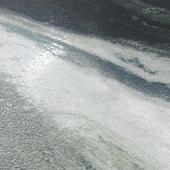Cami: ceramic process water purification system
CA.M.I., a company producing environmental protection systems, has developed a purification system for process water originating from ceramic squaring and polishing lines. The system is capable of handling a water flowrate of 60 m3/h with an expansion capacity of up to 210 m3/h.
Operation
The purification process is based on chemical and physical treatment of water originating from ceramic processing lines and returns the water to the lines subsequent to purification.
This kind of treatment is recommended in all cases in which the discharge water contains a considerable quantity of heavy metals, surfactants, mineral oils or suspended and sedimentable materials originating from production activities.
The chemical/physical principle involves insolubilising the pollutants by adding suitable reagents and subsequently separating the two phases, water and sludge, using physical procedures such as decantation, flotation and filtration.
Components
The system consists of a dirty water accumulation tank, a static decanter for water treatment, a purified water accumulation silo, a tank for polyelectrolyte preparation, a sludge accumulation tank, a filter press and a power panel that controls the operational logic.
• The dirty water accumulation tank has the function of collecting the water originating from the squaring and polishing lines. This water present in the tank is then sent by means of special pumps (pumps that are capable of working with dirty and highly abrasive water while remaining efficient over time and with continuous duty cycles) to the static decanter for purification.
• The static decanter is a silo with the function of coagulating and flocculating the polluting substances contained in these types of ceramic water. When flocculation has been completed, these substances become sludge that is expelled periodically from the bottom section of the decanter. The purified water is sent from the top section of the decanter to the subsequent collection silo.
• The tank for polyelectrolyte preparation has the function of preparing this reagent, which is introduced into the flow of dirty water sent to the decanter for purification in order to accelerate the process of decanting polluting substances. The most suitable reagent is chosen according to the various polluting particles present and according to their concentration in solution.
• The purified water silo has the function of collecting the treated water which will then be returned to the production cycle by means of the pumps and a series of water hoses.
• The sludge accumulation tank serves to accumulate the sludge that is periodically discharged from the decanter before being sent with the aid of a pump to the filter press for filter pressing.
• The filter press has the function of filter pressing the sludge, which is disposed of subsequent to dehydration. The water separated from the sludge will be sent to the dirty water collection tank to be returned to circulation.
• The electrical power panel serves to control the operation of the entire system and its logics via PLC controls.
Did you find this article useful?
Join the CWW community to receive the most important news from the global ceramic industry every two weeks





















